Lakenheath Fen celebrates 30 years of nurturing wildlife
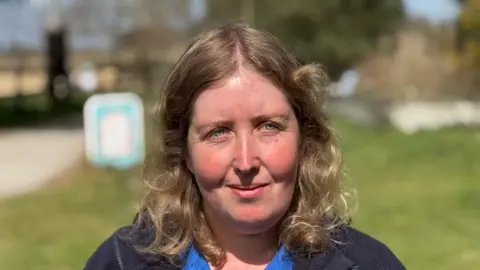 George King/BBC
George King/BBCFor the past three decades Lakenheath Fen Nature Reserve has built a habitat for species that were once considered rare in the UK to breed and and increase in number.
The wetland reserve was created in 1995 when the Royal Society for the Protection of Birds (RSPB) bought the site, which at the time was mainly arable fields.
A mix of reed beds, marshes and woodlands now cover the 1,235-acre (500 hectares) reserve, which is encircled by Suffolk, Cambridgeshire and Norfolk.
On its 30th anniversary the BBC looks at the impact of the reserve and how it could play a part in educating the younger generation about nature.
A 2023 study by The Wildlife Trusts found nearly one in six of more than 10,000 species assessed were at risk of being lost from England, Scotland and Wales.
It recorded there had been a 43% decline in birds and a 31% decline for amphibians and reptiles.
Lakenheath Fen is home to a plethora of different animals, including Bitterns - speckled, brown wetland birds which were previously rare.
"When the RSPB bought the first patch of land there were only seven male [Bitterns] left in the UK," said Heidi Jones, the visitor experience officer at Lakenheath Fen.
"So, it's special because it provided a home for them and enabled them to breed and to find food all year round, as well as a wealth of other wetland birds."
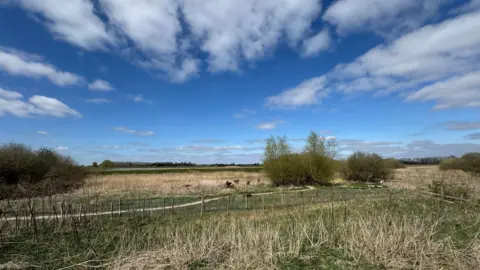 George King/BBC
George King/BBCThe reserve attracts thousands of visitors each year and provides a habitat for birds such as bearded tits, cranes, hobbies, a range of warblers, and whooper swans in the winter.
The cranes, which arrived 2007, have since raised 24 chicks at Lakenheath Fen, which Ms Jones said was important as there were "still not very many in the UK".
"They were driven to extinction by the Victorians but they have slowly started to spread again, so it's important to us that we are a habitat for those," she added.
"In the face of so many declines of native wildlife, it's also quite important to us that we have so many hobbies in the summer."
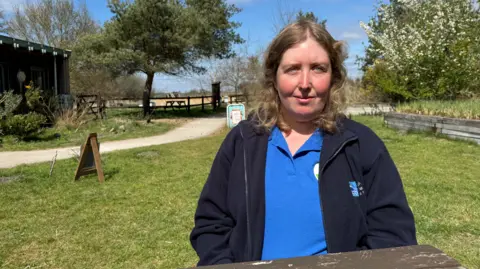 George King/BBC
George King/BBCMs Jones said the reserve had changed "hugely" over the past 30 years, as when the organisation first bought the land it would have been a "very dry landscape", with little in the way of crops or wildlife.
"It's much wetter with great reed beds and there's kind of a sound to it now, instead of it just being silent.
"You have birdsong everywhere, you can hear dragonflies buzzing in the summer and the landscape is alive now," she added.
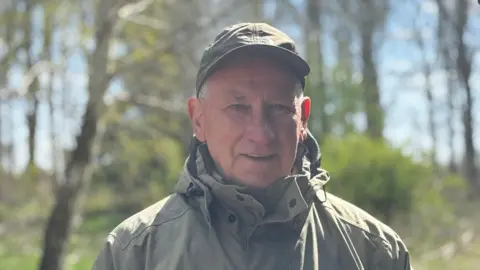 George King/BBC
George King/BBCAbout 20,000 people visit Lakenheath Fen ever year and one of those visitors is 78-year-old birdwatcher, Alan Davies.
"We've been coming for quite a few years now and this is one of our favourite spots," he said.
"It is quite peaceful, it doesn't get too busy, there's plenty to see, and we just enjoy walking around these kind of places.
"You're out in the countryside and the fresh air, and getting exercise - what more could you want?"
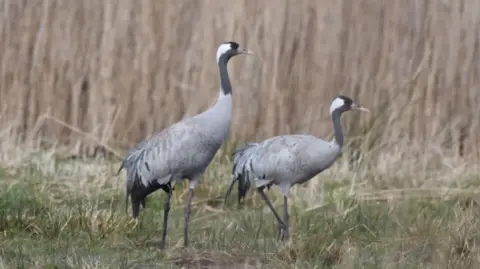 Dave Rogers
Dave RogersAccording to a study by the Royal Society for the Prevention of Cruelty to Animals, a third of young people have never watched birds or other wildlife in their garden or a park.
It has raised concerns about children's access to animals and the natural world - something Ms Jones believed needed to be addressed.
"There's a baseline awareness that most people grow up with that is being lost with the generations," she said.
"There's a lot of fear over things like wasps and moles, so wildlife is seen only really through the lens of being a problem now.
"The enjoyment, pleasure, and what it does for you is not passed on any more and that's really sad."
On Sunday Lakenheath Fen will host a free open day to the public.
"People can come and enjoy as much or as little as they want," said Ms Jones.
"We're a place for people to enjoy wildlife, connect with nature, and have some time out - it's a resource that everybody's welcome to come and enjoy."
Follow Suffolk news on BBC Sounds, Facebook, Instagram and X.
